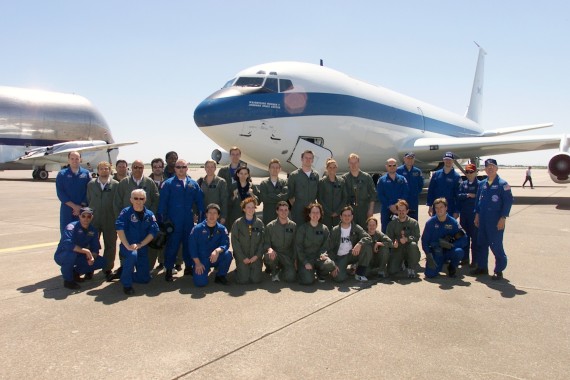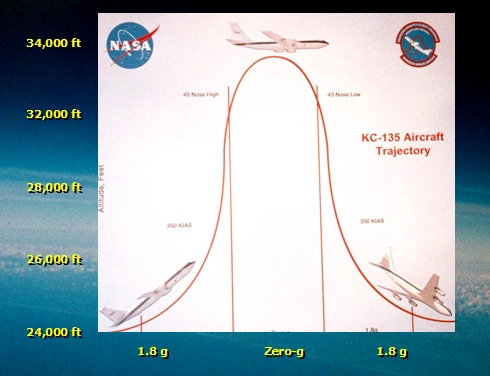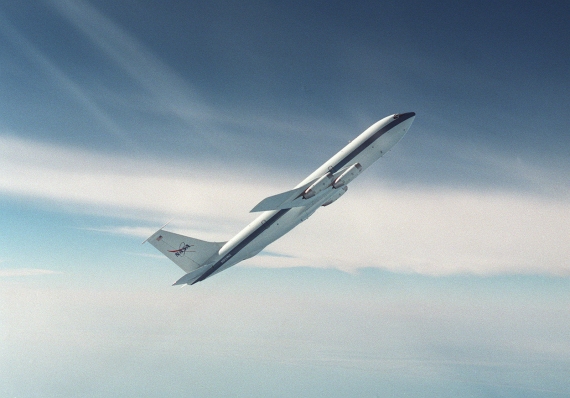

So how do you achieve zero-gravity?
There are three ways to do it:
The first works if you are a deep space probe. The second works if youíre an astronaut. The third is (usually) the easiest way because you donít have to leave the atmosphere!
- Go into deep space, far away from any gravitational body
- Go into orbit (on the Space Shuttle or the International Space Station)
- Take a parabolic flight
Parabolic Flight
Parabolic flight is an aerobatic maneuver performed by an airplane that enables brief (15-25 sec) periods of near-zero-gravity. Both going into orbit and parabolic flight work by using centripetal acceleration to create a vector that equally opposes gravity.
In parabolic flight, a plane, like NASAís Vomit Comet, flies in a parabolic arc. The plane flies up at a 45-50 degree angle from about 24,000 ft. to about 34,000 ft. where the engines are pulled back to idle. The plane has built up enough moment by that point that when the engines are pulled back, it essentially just drifts up and over in an arc like a baseball being thrown up into the air. During this period, everything in the plane feels weightless. The plane then tips forward and starts diving down, the engines are pulled forward again, and the plane then pulls back up around 24,000 ft. During this period, everything in the plane feels about 1.8 times heavier than Earthís gravity.

Depending on how steep the arc is flown, you can negate the effects of gravity varying amounts and achieve Martian gravity (1/3 G), Lunar gravity (1/6 g), and even negative gravity (everything moves up to the ceiling).

On a typical NASA flight, you might experience zero-gravity 38 times in a flight, each period about 20 seconds long, with one Martian gravity parabola lasting about 35 seconds and one Lunar gravity parabola lasting 30 seconds at the end.
Not to mention it's tons of fun (no pun intended)!